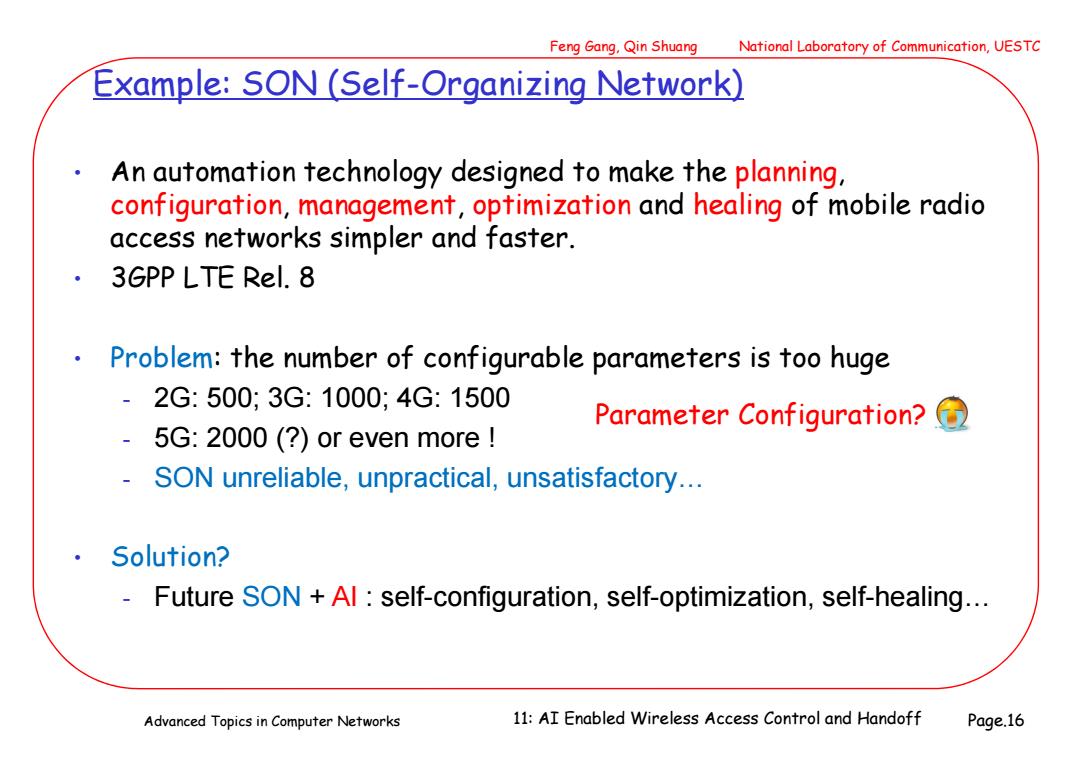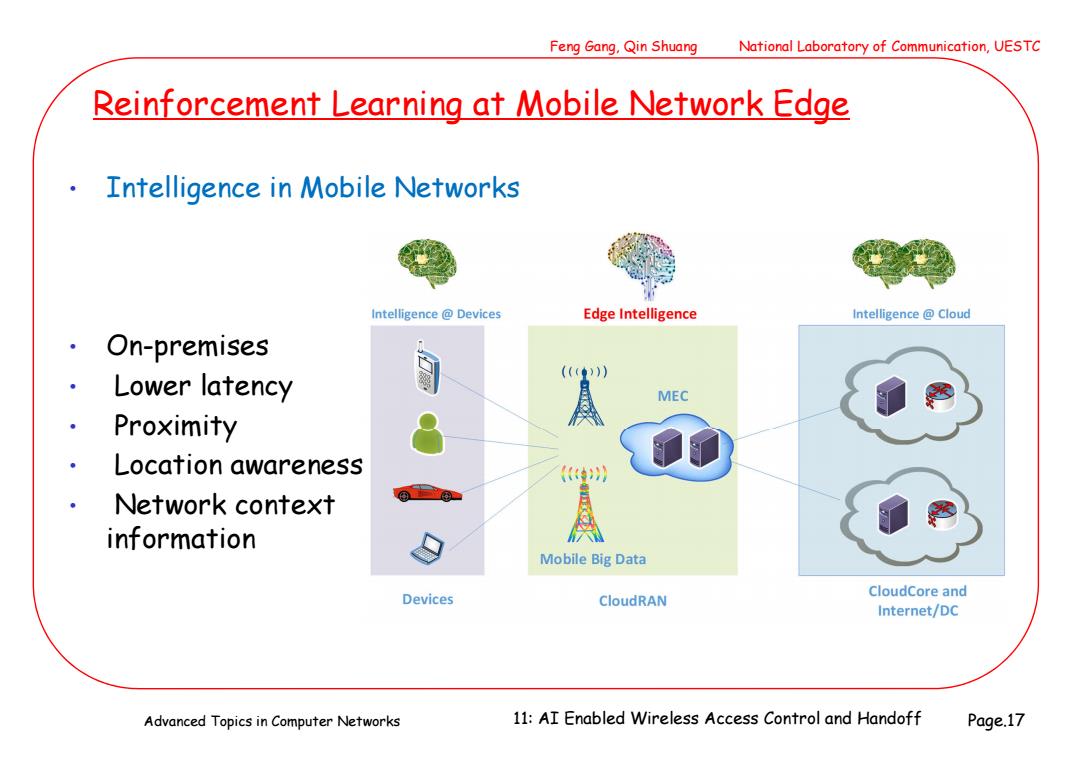
Feng Gang,Qin Shuang National Laboratory of Communication,UESTC Example:SON (Self-Organizing Network) An automation technology designed to make the planning, configuration,management,optimization and healing of mobile radio access networks simpler and faster. 3GPP LTE Rel.8 。 Problem:the number of configurable parameters is too huge -2G:500;3G:1000;4G:1500 Parameter Configuration? 5G:2000(?)or even more SON unreliable,unpractical,unsatisfactory... Solution? Future SON +Al self-configuration,self-optimization,self-healing... Advanced Topics in Computer Networks 11:AI Enabled Wireless Access Control and Handoff Page.16
Advanced Topics in Computer Networks Feng Gang, Qin Shuang National Laboratory of Communication, UESTC Example: SON (Self-Organizing Network) • An automation technology designed to make the planning, configuration, management, optimization and healing of mobile radio access networks simpler and faster. • 3GPP LTE Rel. 8 • Problem: the number of configurable parameters is too huge - 2G: 500; 3G: 1000; 4G: 1500 - 5G: 2000 (?) or even more ! - SON unreliable, unpractical, unsatisfactory… • Solution? - Future SON + AI : self-configuration, self-optimization, self-healing… 11: AI Enabled Wireless Access Control and Handoff Page.16 Parameter Configuration?

Feng Gang.Qin Shuang National Laboratory of Communication,UESTC Reinforcement Learning at Mobile Network Edge Intelligence in Mobile Networks Intelligence Devices Edge Intelligence Intelligence Cloud 。 On-premises ()】 Lower latency MEC Proximity 。 Location awareness ((4021) Network context information Mobile Big Data Devices CloudCore and CloudRAN Internet/DC Advanced Topics in Computer Networks 11:AI Enabled Wireless Access Control and Handoff Page.17
Advanced Topics in Computer Networks Feng Gang, Qin Shuang National Laboratory of Communication, UESTC Reinforcement Learning at Mobile Network Edge • Intelligence in Mobile Networks 11: AI Enabled Wireless Access Control and Handoff Page.17 • On-premises • Lower latency • Proximity • Location awareness • Network context information